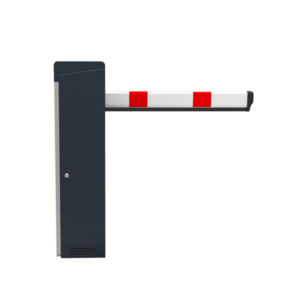Parking Barrier
Parking barrier are physical devices that are used to regulate and control vehicle access to parking lots, garages, and other private or public parking areas. These barriers come in different shapes, sizes, and designs, but their primary purpose is to prevent unauthorized parking, control traffic flow, and ensure the safety of pedestrians and drivers.
PB1000

Function
- Compact design, convenient for packing and lowering delivery cost;
- ZK designed rolling pressure spring technology, extending product life;
- Boom can be raised and lowered smoothly and steadily;
- Outer case and interior can be flexibly separated, convenient for maintenance and customization;
- Simple installation – just fix the barrier gate on floor and connect it to electricity.
PB1000 Catalogue

Function
- Compact design, convenient for packing and lowering delivery cost;
- ZK designed rolling pressure spring technology, extending product life;
- Boom can be raised and lowered smoothly and steadily;
- Outer case and interior can be flexibly separated, convenient for maintenance and customization;
- Simple installation – just fix the barrier gate on floor and connect it to electricity.
PB1000 Catalogue
One common type of parking barrier is the boom barrier. This is a bar or arm that is raised and lowered to allow or prevent vehicles from entering or exiting a parking area. Boom barriers are often operated manually, but they can also be automated and controlled by electronic systems, such as RFID readers, access cards, or remote controls.
Another type of parking barrier is the bollard. Bollards are short vertical posts that are installed at the entrances or exits of parking areas to prevent unauthorized access by vehicles. They can be made of different materials, such as concrete, steel, or plastic, and can be designed to be retractable or fixed.
Other types of parking barriers include sliding gates, swing gates, turnstiles, and speed bumps. Sliding gates are typically used in high-security parking areas, such as government buildings, hospitals, or airports, and are designed to slide horizontally to allow or prevent vehicle access. Swing gates, on the other hand, are hinged on one side and swing open or closed to control traffic flow. Turnstiles are typically used in pedestrian-only areas, such as parking garages or transit stations, and are designed to prevent unauthorized entry or exit by foot traffic. Speed bumps, on the other hand, are used to slow down vehicles and reduce speed in parking areas to enhance safety.
